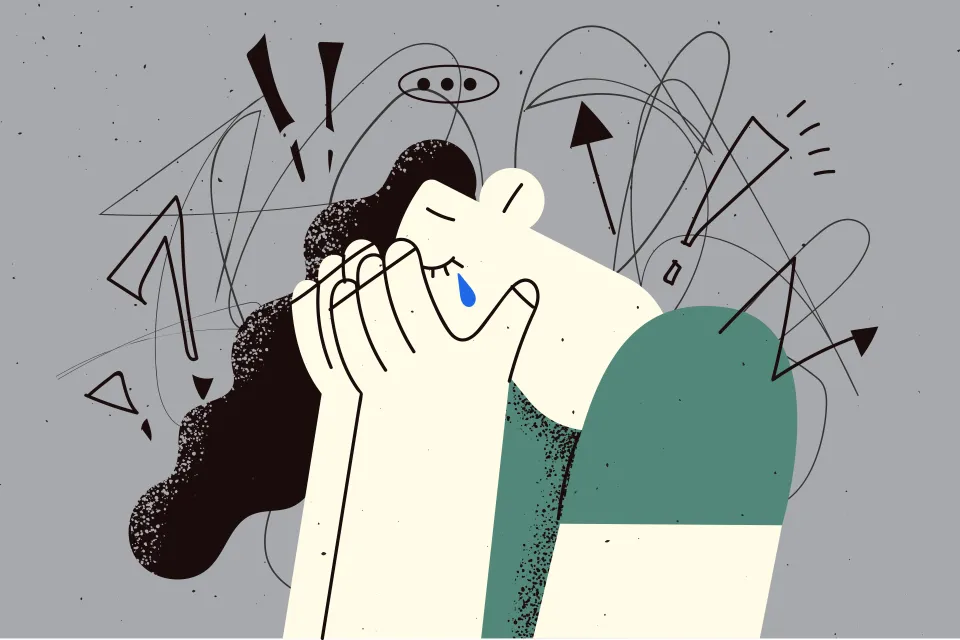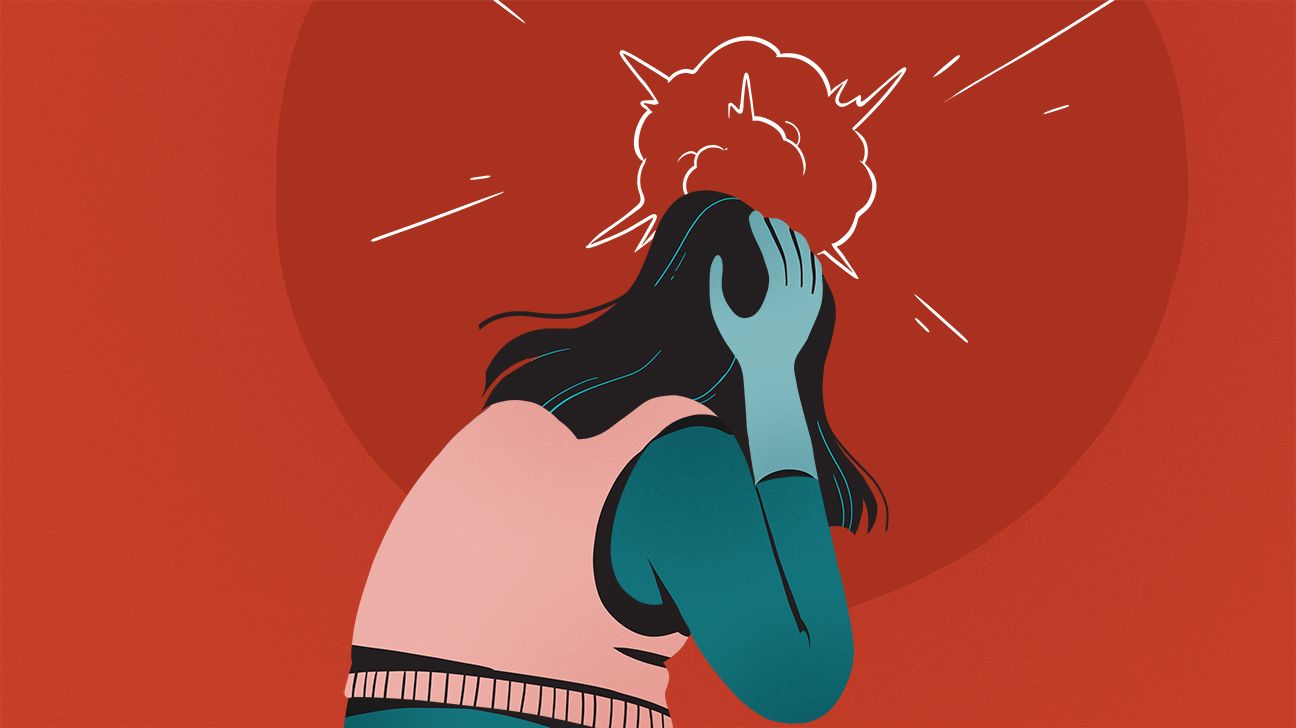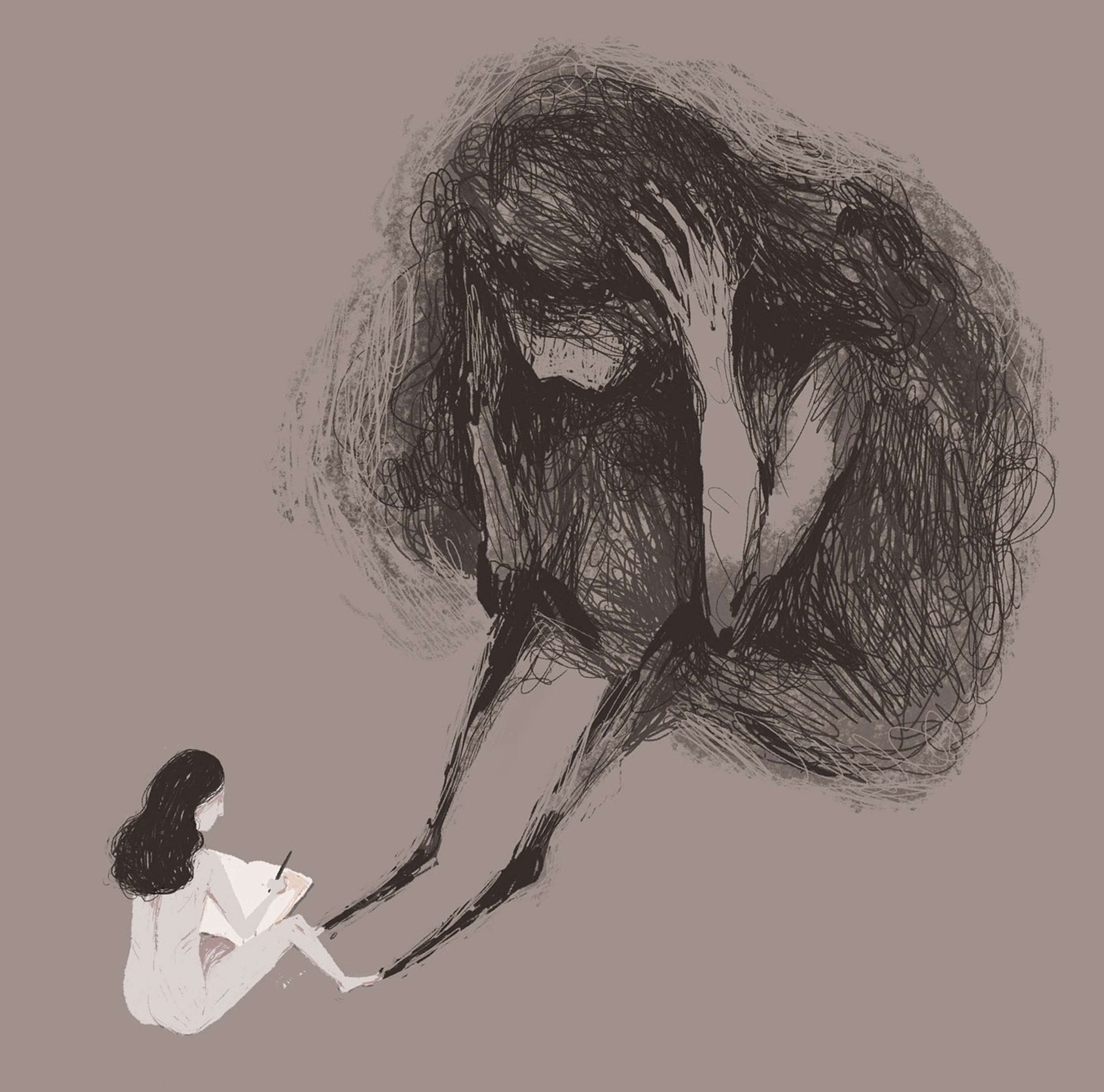Thriving Through Anxiety: A Guide to Mind-Body Wellness

Have you ever felt a sudden knot in your stomach or a pounding in your chest, but couldn't quite put your finger on why?
Anxiety is often that uninvited guest, lurking in the shadows of our minds, ready to crash the party at any moment.
It's more than just a fleeting emotion or a nagging worry; it's a complex interplay between mind and body that can show up unannounced, make itself at home, and often overstay its welcome.
But here's the twist: anxiety is not just a mental phenomenon. It can manifest physically in ways that might surprise, confuse, or even alarm you. From headaches to heart palpitations, anxiety's reach extends far beyond the mind, touching every corner of the body.
Join me as we explore this intricate connection and uncover the tools to not only understand but thrive in the face of anxiety's many disguises.
The Physical Manifestations of Anxiety
Anxiety's reach extends far beyond the mind, infiltrating our very physical being. It's a crafty and complex phenomenon that can manifest in surprising ways.
Let's delve into some of these physical symptoms:
- Headaches: Those relentless headaches that seem to linger might be more than just a nuisance. Anxiety acts like a nagging friend who keeps calling, only this time, it's pounding inside your head. Research even links anxiety to migraines and chronic daily headaches.
- Digestive Issues: Anxiety's impact on digestion is like a roller coaster ride for your stomach, and not the fun kind! It can slow down digestion, causing bloating and constipation, or speed it up, leading to diarrhea. Conditions like irritable bowel syndrome (IBS) can be exacerbated by anxiety.
- Cardiovascular Issues: Your heart doesn't dance to anxiety's tune willingly. Rapid heart rate, increased blood pressure, or palpitations – these are ways anxiety can make your heart jitterbug without your permission. Long-term anxiety may even have associations with heart conditions.
- Changes in Sexual Functioning: Anxiety can be a real mood killer in the bedroom, acting like an intrusive third wheel on a romantic date. It can distract from erotic stimuli, impair arousal, and lead to difficulties in sexual performance.
- Lowered Energy: Feeling like you're running on empty? Anxiety might be draining your batteries, leading to fatigue that's strongly associated with mental health conditions.
- Chronic Pain: Anxiety doesn't just ache your mind; it can ache your body too. From neck pain to back pain, it can be a real pain in the... well, you get the idea. Chronic pain disorders often accompany anxiety, making daily life even more challenging.
- Breathing Difficulties: Anxiety's way of taking your breath away is far from romantic. Shortness of breath or rapid breathing can cause sharp chest pain, sometimes making it too uncomfortable to stay present in your body.
These physical manifestations of anxiety are not just symptoms; they are signals from your body, telling you that something is amiss.
The Chemical Culprits: Cortisol and Adrenaline
Anxiety triggers the release of cortisol and adrenaline, hormones responsible for the fight, flight, or freeze response. It's like your body's alarm system, but sometimes it goes off when there's no real danger. Too much worry can cause higher levels of these chemicals, creating a complex and almost cyclical relationship with anxiety.
Understanding Triggers: The Hidden Drivers of Anxiety
Triggers are like hidden tripwires in our minds, setting off a cascade of anxiety when we least expect it.
They can be thoughts, feelings, situations, or even physical sensations that ignite our anxiety.
Understanding triggers is crucial in managing anxiety, as it allows us to recognize and address the underlying causes.

How Triggers Cause Anxiety
- Immediate Response:
Triggers can cause an immediate response.
For example, hearing a car horn might remind someone of a car accident they were in, leading to instant anxiety. This reaction can happen consciously or subconsciously, like a reflex. - Association with Past Experiences:
Triggers often link to past experiences or traumas. A person who was bitten by a dog as a child might feel anxious around dogs as an adult. These associations can be powerful and deeply ingrained. - Physical Reactions:
Triggers can cause physical reactions, such as increased heart rate or shallow breathing. For instance, the sight of a medical needle might cause someone to hyperventilate, further intensifying their anxiety.
Becoming Aware of Triggers
- Self-Reflection:
Regular self-reflection through journaling or mindfulness can help identify triggers. Writing about your day and noting when you felt anxious can reveal patterns and triggers over time. - Professional Guidance:
Therapists can provide personalized insights into your unique triggers and how to manage them. They can help you explore your past and uncover hidden triggers. - Mindfulness and Observation:
Mindfulness practices, like meditation, allow you to observe your thoughts and feelings without judgment. This awareness can help you recognize triggers as they occur, such as realizing that crowded places make you feel anxious.
Changing Your Response to Triggers
- Understanding the Trigger:
Break down the trigger to understand why it causes anxiety. If public speaking makes you anxious, is it the fear of judgment or a past experience that fuels this anxiety? Understanding the root cause is the first step in addressing it. - Developing Coping Strategies:
Create personalized coping strategies. If traffic jams trigger anxiety, perhaps listening to calming music or practicing deep breathing can help. Experiment with different strategies to find what works best for you. - Creating a Support System:
Share your triggers with friends or family who can provide support. If social gatherings trigger anxiety, having a supportive friend with you can make the experience more manageable. - Gradual Exposure (with Professional Guidance):
Gradually facing the trigger can reduce its power. If flying causes anxiety, a therapist might help you gradually face this fear through visualization, simulated experiences, and eventually real flights.
Triggers are not fixed or unchangeable. With awareness, understanding, and intentional action, you can change your response to triggers and reduce their impact on your life.
It's like defusing a hidden bomb in your mind, rendering it harmless.
Remember, understanding triggers is a journey, not a destination. It requires patience, compassion, and often professional guidance. But the rewards are profound: a life with more control, less anxiety, and the ability to thrive.
Coping with Anxiety: You're Not Alone

Living with anxiety can feel like navigating a maze without a map, stumbling through twists and turns with no clear direction. But fear not! You're not alone on this journey, and there are tangible ways to cope and thrive:
- Wellness Techniques: Embracing wellness techniques like meditation, deep breathing exercises, and yoga can be as refreshing as a cool breeze on a hot day. These practices help center the mind and body, creating a sense of calm and balance.
- Chronic Pain Management: If anxiety brings chronic pain, consider therapy or relaxation techniques like acupuncture. It's like giving anxiety a taste of its own medicine, providing relief and improving overall well-being.
- Professional Help: Sometimes, the maze of anxiety requires a guide. Mental health professionals can offer treatment options like cognitive behavioral therapy (CBT) or medication, tailored to your unique needs and challenges.
- Breathwork for Calming Anxiety: Breathwork is a powerful tool in the fight against anxiety. It's like having a secret weapon you can use anytime, anywhere. Here's how to do it:
- Find a Comfortable Position: Sit or lie down in a relaxed position.
- Inhale Deeply: Breathe in slowly through your nose for a count of four, filling your lungs completely.
- Hold Your Breath: Hold your breath for a count of four.
- Exhale Slowly: Exhale through your mouth for a count of four, releasing all the air.
- Repeat: Repeat this cycle 4-5 times or until you feel a sense of calm.
- Mindfulness: Focus on the sensation of your breath, the rise and fall of your chest, and the present moment.
- Practice Regularly: Make breathwork a daily practice to build resilience against anxiety.

Thriving, Not Just Surviving
Anxiety is a complex beast, but recognizing its physical symptoms can make it easier to manage. By putting yourself first and being aware of the signs, you can receive the care that best supports your needs.
Remember, anxiety doesn't have to be a life sentence. With the right tools and support, you can thrive, not just survive. So, take a deep breath, laugh at anxiety's audacity, and take control of your journey.
Here are three thought-provoking questions that can guide them on this introspective journey:
- Understanding Your Anxiety:
Reflect on the last time you felt anxious.
Can you identify specific thoughts, situations, or triggers that led to this feeling?
How did your body physically respond?
Understanding these connections can provide insights into your unique anxiety patterns. - Exploring Coping Mechanisms:
Think about the ways you've coped with anxiety in the past.
What strategies have been effective, and which ones haven't?
Are there new techniques, such as breathwork or mindfulness, that you could incorporate into your routine?
Evaluating your coping mechanisms can help you build a personalized toolkit for managing anxiety. - Envisioning a Thriving Life:
Imagine a life where anxiety doesn't hold you back. What does that look like for you?
What steps can you take to move closer to that vision?
This question encourages you to set positive goals and identify actionable steps to achieve a more balanced and fulfilling life.
By Bertus Coetzer, RD/BSCPSYCH/CSCS/MCHC specializing in obesity, eating disorders, mental health disorders, and diabetes.